The flag of Guinea stands as a vivid representation of the nation’s character and aspirations, capturing its unique journey and ambitions. Serving as a key symbol on national and global platforms, this flag signifies its people’s resilience and cultural richness, marking Guinea’s distinct place in the international community.
Flag of Guinea
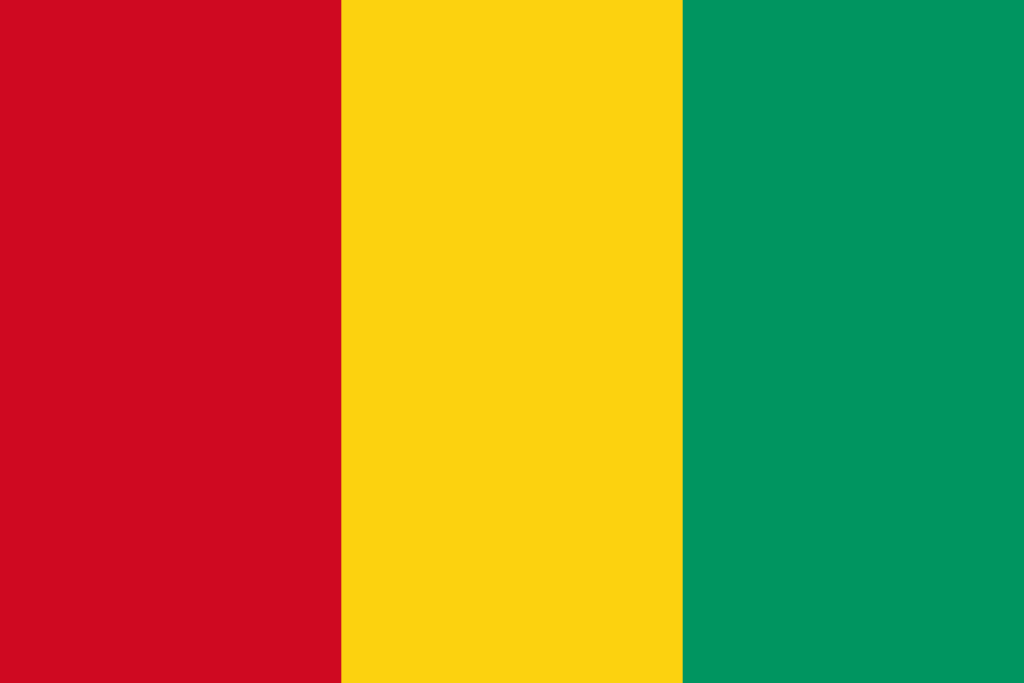
The flag of Guinea features three vertical stripes in a clean, straightforward design. Its simplicity in form allows for a deeper exploration of the meaning behind each stripe, making it a significant symbol of Guinea’s national identity on the global stage.
Flag of Guinea: Color Palette
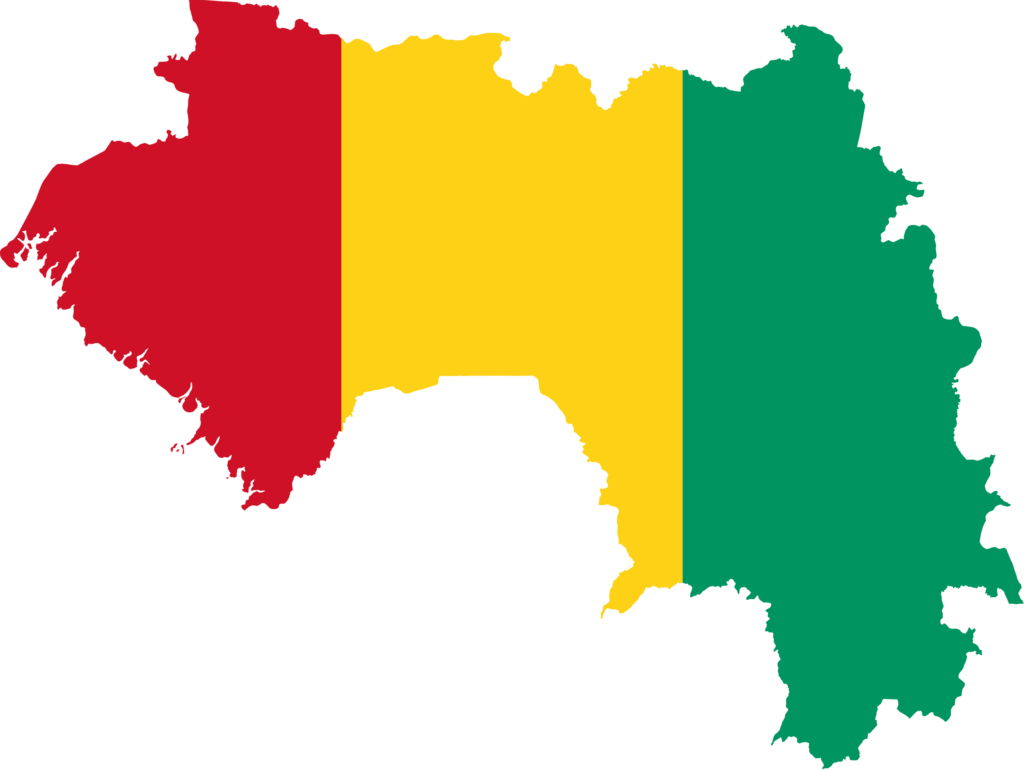
Guinea Flag Emoji: 🇬🇳
The color palette of the Guinea flag comprises a trio of distinct hues, each chosen for its deep symbolic value. This vibrant combination forms the core of the flag’s visual identity, setting the stage for a more detailed exploration of the individual significance of each color.
Meaning of Each Color
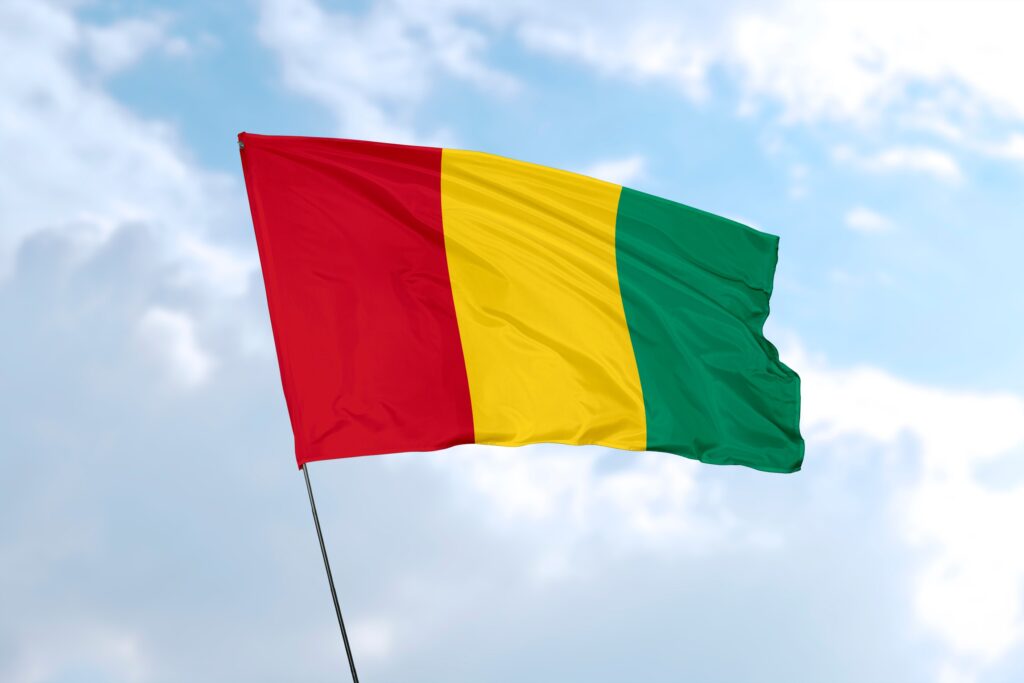
Red
The red stripe in Guinea’s flag is rich in historical and cultural significance. It symbolizes the blood shed by the anti-colonialist martyrs who fought for the country’s independence.
It is also a representation of the labor of the working classes and their aspirations for progress. This color encapsulates the spirit of sacrifice and the struggle that has defined Guinea’s path to freedom and development.
Yellow
The middle stripe of yellow carries a dual symbolism. On one hand, it represents the wealth of Guinea, notably its gold reserves, highlighting the country’s natural riches.
On the other hand, it symbolizes the sun, reflecting energy, generosity, and equality, as the sun gives light equally to all people. This color also represents justice, aligning with the nation’s values and aspirations.
Green
The green stripe is a tribute to Guinea’s lush vegetation and agricultural wealth. It signifies the continued prosperity that arises from the country’s natural resources.
Moreover, it represents the historically challenging life of the Guinean masses who predominantly live in rural areas, underscoring the importance of agriculture and the environment in the nation’s heritage and economy.
Guinea Coat of Arms
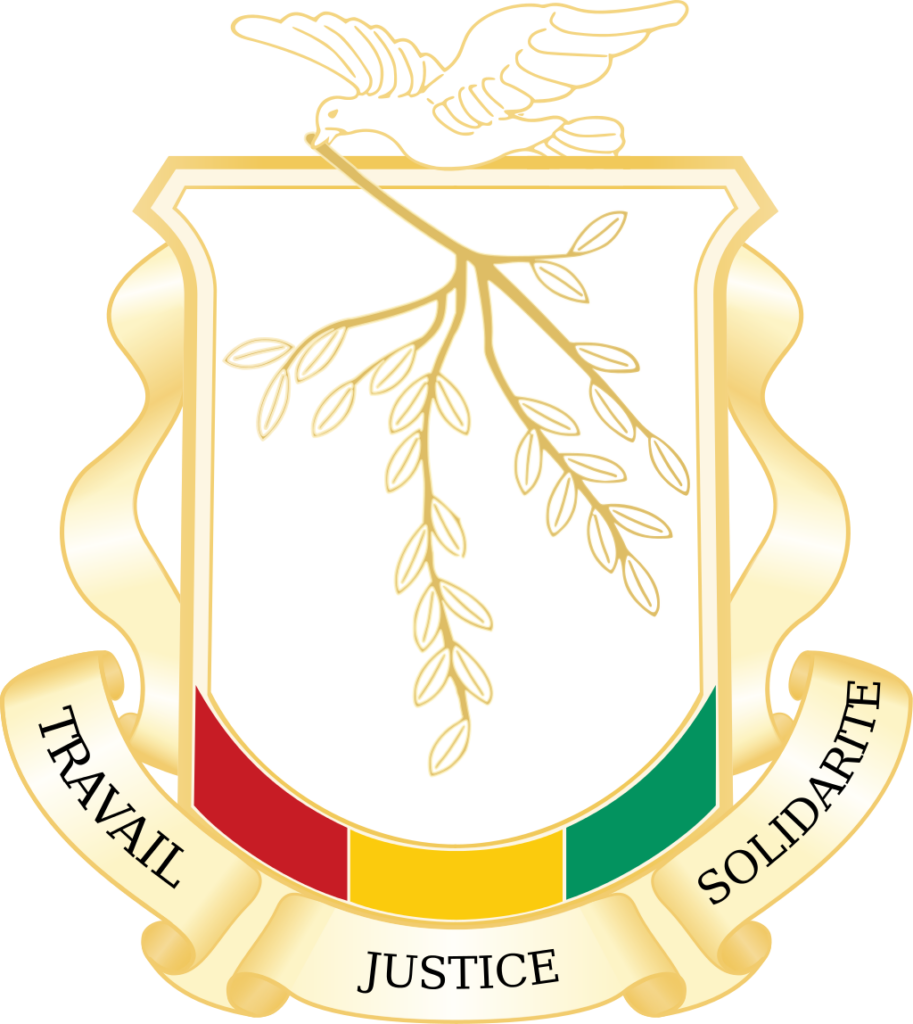
The Coat of Arms of Guinea symbolizes the nation’s commitment to peace, as indicated by the dove with an olive branch. It also reflects the country’s core values of hard work, justice, and solidarity, as articulated in its national motto. This emblem is a beacon of national pride and identity, encapsulating Guinea’s aspirations and resilience.
Historical Evolution and the Meaning Behind Changes
The flag of Guinea, adopted at independence in 1958, marked a significant shift from colonial representation to a symbol of national identity and African unity.
Inspired by the Pan-African movement and resembling Ghana’s flag, its colors—red, yellow, and green—were chosen for their deep symbolic meanings. Red symbolizes sacrifice and labor, yellow represents wealth and optimism, and green signifies agricultural richness.
This flag has remained unchanged since its adoption, embodying Guinea’s journey from colonial rule to an independent, unified nation.
Overall Symbolic Meaning of the Flag
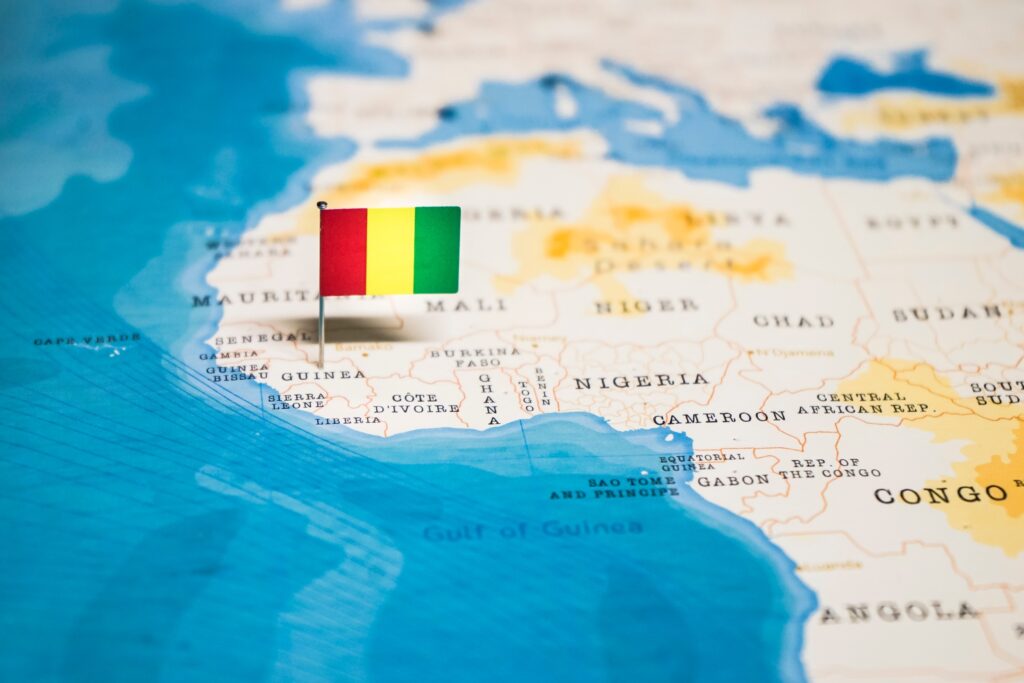
The flag of Guinea symbolizes the nation’s historical struggles, independence, and aspirations. It embodies Guinea’s resilience and unity, reflecting a collective identity and pride in its unique heritage and prospects. This flag is not just a national emblem but a representation of the Guinean people’s solidarity and hope.
Similar Flags to the Flag of Guinea
The flag of Guinea shares its distinct color scheme with several other national flags, reflecting common historical and cultural ties. Here are the top flags that resemble Guinea’s, highlighting the shared symbolism and connections
Mali
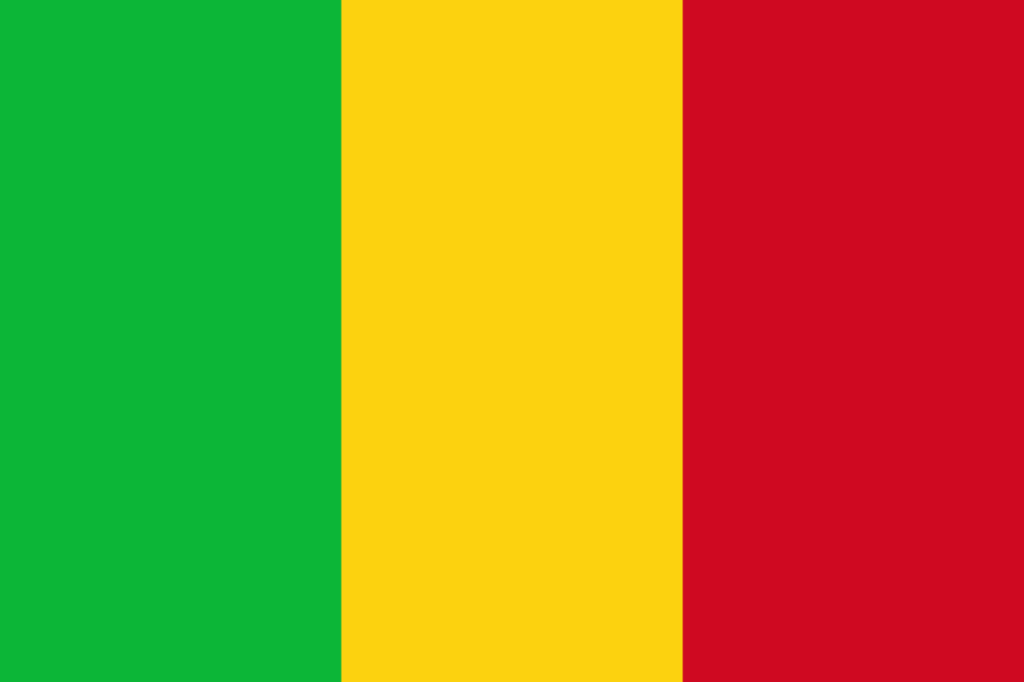
Guinea and Mali use red, yellow, and green tricolor in reverse order. This similarity is rooted in their shared history of French colonial rule and their subsequent journey towards independence.
Using the same colors in both flags represents a shared commitment to Pan-African ideals and a shared cultural and political heritage within the West African region.
Guinea-Bissau
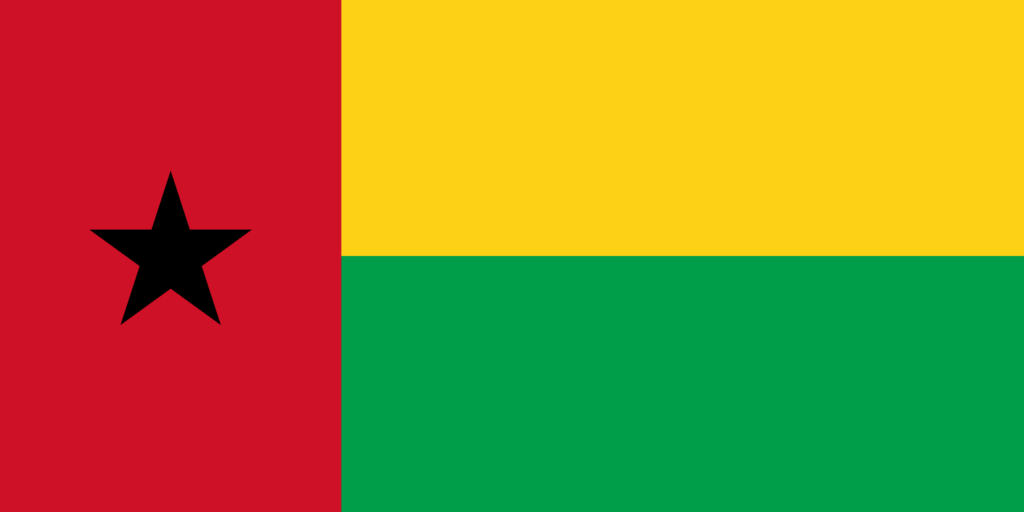
Republic of Guinea and Guinea-Bissau: Guinea and Guinea-Bissau’s flags share a common color scheme, indicating their geographical proximity and historical ties.
Both countries experienced similar colonial histories and political struggles, reflected in their choice of the Pan-African colors. This choice signifies their mutual aspirations for independence, unity, and solidarity among African nations.
Senegal
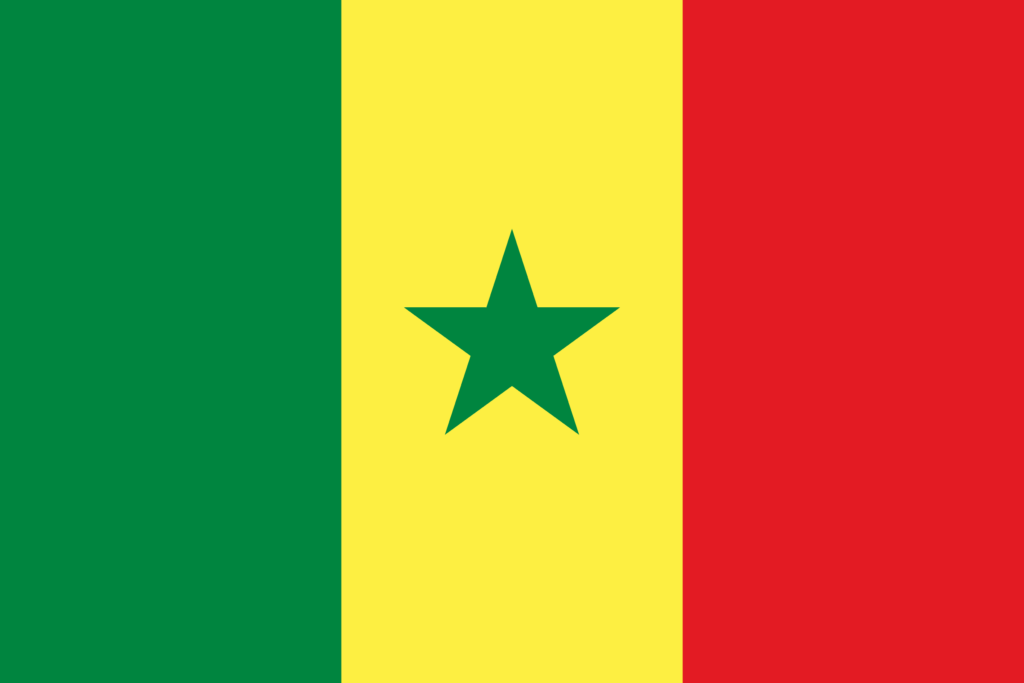
The flags of Guinea and Senegal also feature the same colors. This resemblance stems from their shared cultural and historical background, including periods of French colonialism and participation in the Pan-African movement.
These colors symbolize common values and aspirations, particularly regarding African unity and independence.
Conclusion
The flag of Guinea symbolizes the nation’s historical struggles, prosperity, and hopes. In the context of global flags, it stands as a testament to African unity and independence. It is a beacon of pride and national identity for Guineans, uniting them in their rich heritage and future ambitions.
Image Sources and Copyright Information
- Guinea Flag Against Sky Background: © Royal Graphics/Shutterstock
- Guinea Flag Pin on Map: © hyotographics/Shutterstock